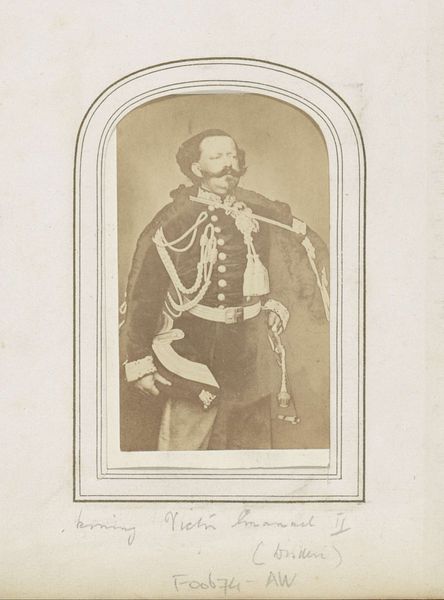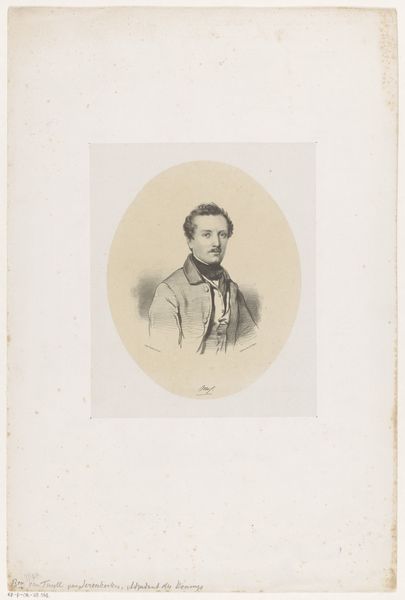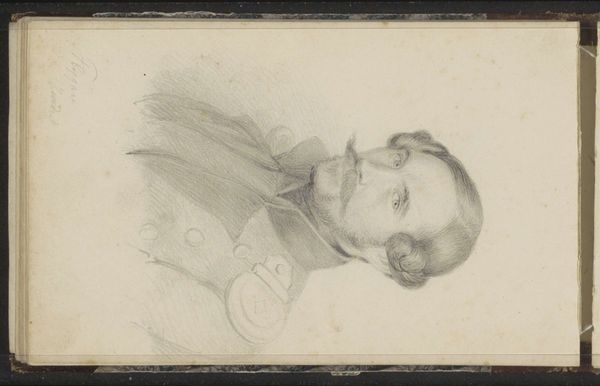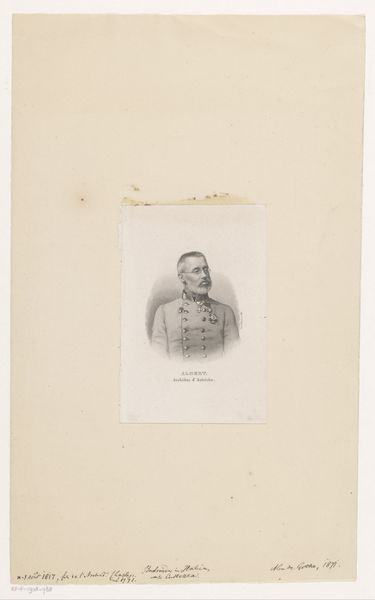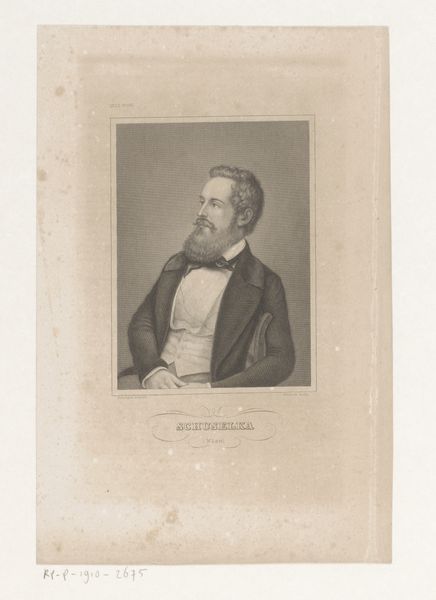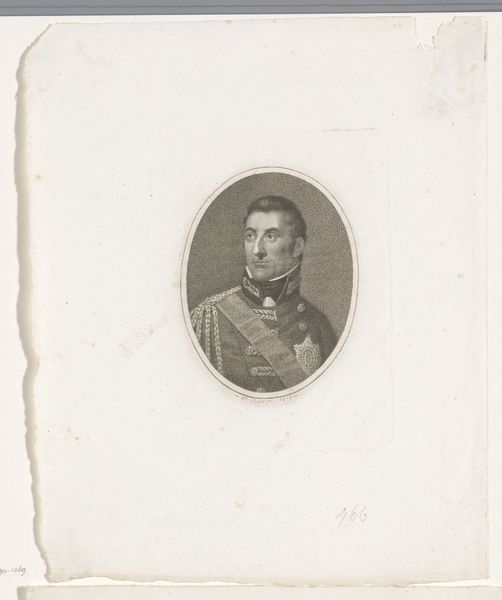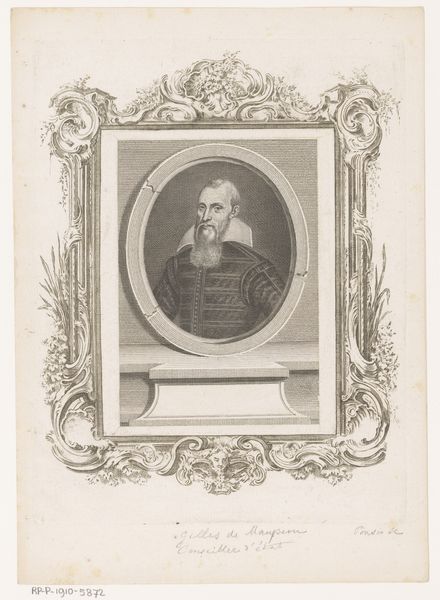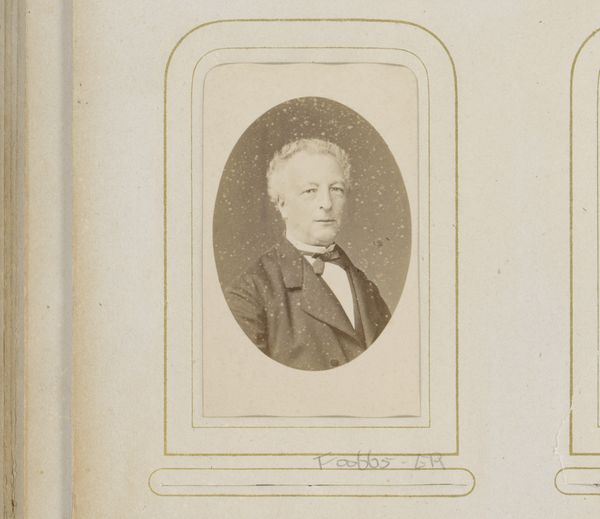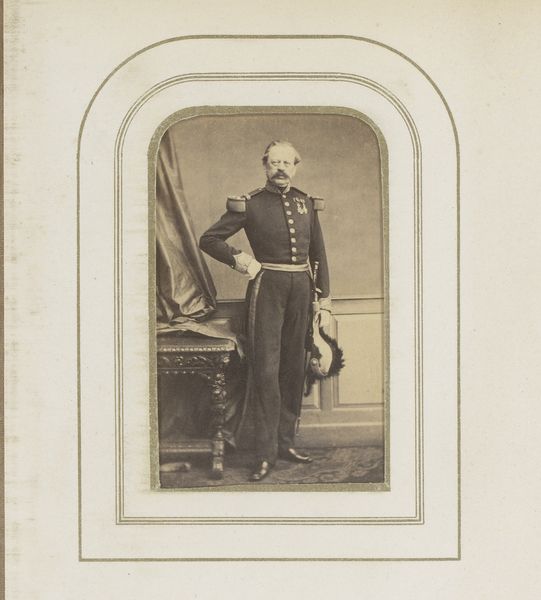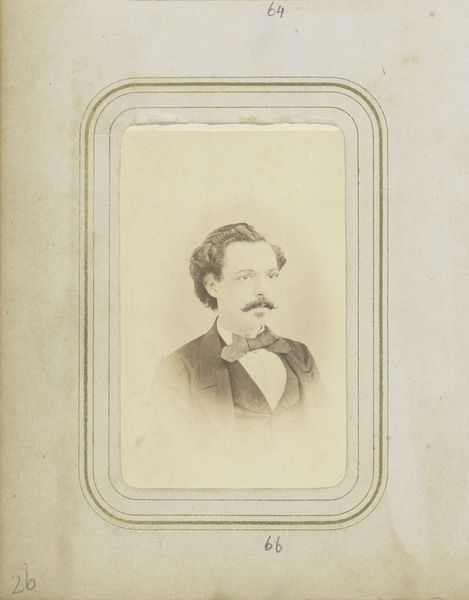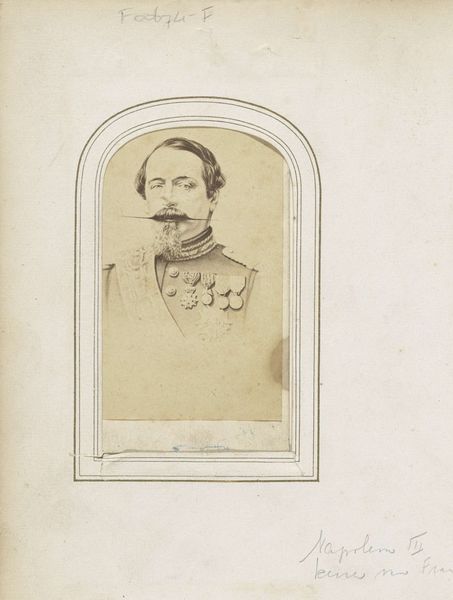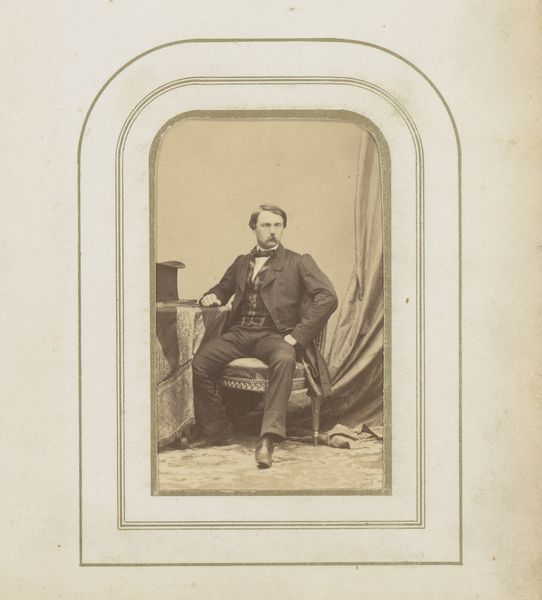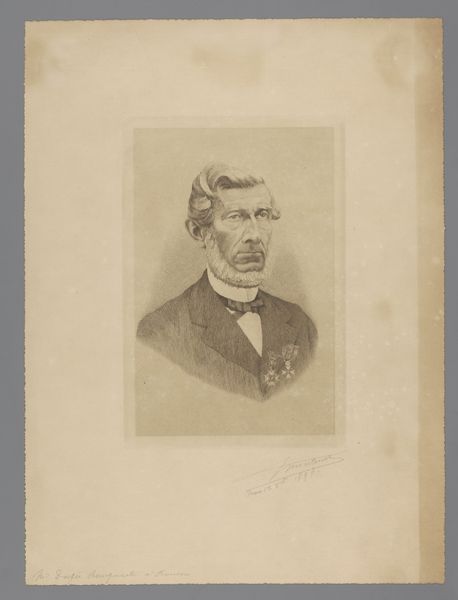
Portret van man in een militair kostuum, aangeduid als Mohr c. 1860 - 1865
0:00
0:00
photography
#
photography
#
genre-painting
#
realism
Dimensions: height 94 mm, width 55 mm, height 106 mm, width 64 mm
Copyright: Rijks Museum: Open Domain
Curator: Good morning. I'm fascinated by this early photograph from around 1860 to 1865. It’s a portrait of a man in a military uniform, and it's intriguingly titled "Portret van man in een militair kostuum, aangeduid als Mohr," attributed to Photographie Saint Thomas d'Aquin. What’s your first impression? Editor: It's the stare that grabs you, isn't it? Intense. But there’s also something… almost melancholy in his eyes. It’s beautifully rendered in soft sepia tones. The man seems incredibly burdened beneath all that regalia. Curator: Indeed. That tension between the subject and the context interests me greatly. Military portraits are typically about projecting power and authority, but this photograph seems to undermine that somewhat. Look at the slight imperfections in the photographic print itself. Those details contribute to a sense of vulnerability. It is a great example of realism. Editor: Absolutely. The trappings of power, the meticulous details of the uniform, are meticulously captured. Yet the image has this fragility; it’s clearly of its time, susceptible to decay, not some immortal idealized representation. I love that the photograph shows genre painting techniques to illustrate an accurate portrayal. I am also very much captured by the photography and light play techniques within. Curator: That’s it precisely! This wasn’t just about creating an image; it’s a reflection of a society grappling with new technologies, social identities, and the role of photography in shaping public perception. One has to ask why photography? It became one of the only mediums, along with portraiture painting that common folks, with money could obtain as keepsakes. Editor: It’s poignant, really. To think this photograph, this slice of a life captured so long ago, allows us now to speculate, to create narratives around this man. Who was he? What was his story? How many more men wore those regalias that did not make history? Did anyone commemorate those lives? Curator: Precisely. The beauty, I think, is in the gaps. It allows for endless imaginative fill-in. "Mohr" becomes less about a specific individual, and more about the human condition at a particular point in time, reflected through the lens of socio-political expectations and constraints. Editor: That tension – the known and the unknown, the rigid formality and subtle humanity. That’s what resonates. Thanks for this perspective. I’ll never see this portrait quite the same way again. Curator: Nor I. Every viewing offers something different, doesn't it? An ongoing dialogue between the past and the present.
Comments
No comments
Be the first to comment and join the conversation on the ultimate creative platform.
